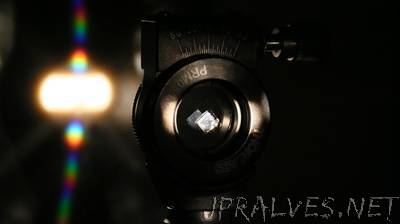
“Thanks to a new technique developed at EPFL, optical diffraction gratings can now be made out of pure diamond, with their surfaces smoothed down to the very last atom. These new devices can be used to alter the wavelength of high-powered lasers or in cutting-edge spectrographs.
A team of EPFL researchers has developed an unconventional way of microscopically cutting diamonds into a particular shape and smoothing them at an atomic level. This new technique, which will be presented at the International Conference on Diamond and Carbon Materials DCM2017 on 5 September, makes it possible to manufacture diffraction gratings out of pure diamond, which has unique properties that are ideal for both spectroscopy and the optical components used in high-powered lasers.
Diffraction gratings are made up of parallel grooves that break up light into its spectral components, kind of like a prism. These gratings are usually made out of glass and silicon, materials that have already been used in spectrographs and to alter the color emitted by lasers.
The team, led by Niels Quack, a SNSF-funded professor at the School of Engineering, has now found a way to make these gratings out of single crystal diamond as well, opening up the field to an array of new possibilities. Diamonds are unmatched in terms of their thermal conductivity, which is between five and ten times greater than that of any other material used for this purpose. Diamonds are also extremely hard and work well with UV rays, as well as infrared and visible beams. “Diamonds are chemically inert, which means that even the most aggressive chemical substances can’t attack them. But it also means that they are very difficult to machine,” explains Dr. Quack. “So this new way of carving diamonds could prove very useful.”“
